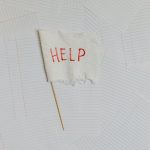Are you curious about nursery cotton fabric? Look no further! In this article, we’ll explore the history, characteristics, and benefits of this versatile material.
We’ll also delve into the different types of nursery cotton fabric and how to care for it. Plus, we’ll uncover the sustainable practices used in its production.
So, if you want to discover everything you need to know about nursery cotton fabric, keep reading!
Table of Contents
History of Nursery Cotton Fabric
The history of nursery cotton fabric dates back to the early 20th century. Nursery cotton fabric has evolved over the years to become a staple in home decor. Its softness and versatility make it an ideal choice for various uses in nurseries and children’s rooms.
Originally, nursery cotton fabric was primarily used for baby bedding, such as crib sheets and blankets. However, as time passed, its uses expanded to include curtains, upholstery, and even wall coverings. Its ability to withstand frequent washing and its hypoallergenic properties have made it a popular choice among parents.
In home decor, nursery cotton fabric is often used to create a cozy and inviting atmosphere. Its gentle colors and patterns add a touch of warmth to any space. Whether it’s a whimsical print on a pillow or a delicate curtain, nursery cotton fabric brings a sense of comfort and tranquility.
Furthermore, nursery cotton fabric is also chosen for its durability. It can withstand the wear and tear that comes with children’s play, making it an excellent choice for furniture upholstery. Its stain-resistant properties make it easy to clean, ensuring that it will last for years to come.
Characteristics of Nursery Cotton Fabric
You’ll love how soft and breathable nursery cotton fabric feels against your baby’s delicate skin. Nursery cotton fabric is known for its exceptional softness, making it a popular choice for baby products such as bedding, clothing, and blankets. Made from 100% natural cotton fibers, this fabric offers a gentle touch that ensures your baby’s comfort throughout the day and night.
Safety is a top priority when it comes to choosing fabrics for your little one. Nursery cotton fabric is not only soft but also hypoallergenic and free from harmful chemicals. It is carefully manufactured to meet strict safety standards, ensuring that it is gentle and non-irritating to your baby’s sensitive skin. This fabric is also breathable, allowing air to circulate freely and preventing overheating, which is essential for newborns.
In addition to its softness and safety, nursery cotton fabric is also highly durable. It can withstand frequent washing without losing its softness or shape, making it a practical choice for baby products that require regular cleaning. Its natural properties also make it resistant to pilling and fading, ensuring that it will maintain its quality and appearance over time.
Overall, nursery cotton fabric offers the perfect combination of softness and safety for your baby’s delicate skin. Its breathable nature, hypoallergenic properties, and durability make it an excellent choice for creating a cozy and comfortable environment for your little one.
Benefits of Using Nursery Cotton Fabric
When it comes to nursery cotton fabric, you’ll be pleased to know that it offers a range of benefits.
Firstly, it is known for being incredibly soft and hypoallergenic, making it perfect for your baby’s delicate skin.
Additionally, nursery cotton fabric is durable, ensuring that it can withstand the wear and tear that comes with everyday use.
Lastly, this fabric is highly breathable, allowing air to circulate and keeping your baby cool and comfortable.
Soft and Hypoallergenic
Feel the softness of nursery cotton fabric; it’s perfect for your baby’s sensitive skin. Nursery cotton fabric is not only incredibly soft but also hypoallergenic, making it ideal for babies with allergies or sensitive skin.
Unlike synthetic fabrics, which can cause irritation and discomfort, nursery cotton fabric is gentle and soothing. It is made from eco-friendly cotton, produced without the use of harmful chemicals or pesticides. This makes it a safe and natural choice for your little one.
Nursery cotton fabric is also breathable, allowing air to circulate and preventing moisture build-up, reducing the risk of skin irritation. So, rest easy knowing that your baby is wrapped in the softest, safest fabric possible.
Durable and Breathable
Wearing this breathable material will keep you comfortable all day long.
Nursery cotton fabric is not only soft and hypoallergenic, but it is also durable and breathable.
The fabric’s moisture-wicking properties make it the perfect choice for those hot summer days when you want to stay cool and dry.
As you go about your daily activities, the fabric will wick away any sweat or moisture, keeping you feeling fresh and comfortable.
Additionally, nursery cotton fabric is eco-friendly. It is made from natural fibers and is biodegradable, reducing the environmental impact.
Different Types of Nursery Cotton Fabric
You can easily distinguish between different types of nursery cotton fabric by examining their patterns and textures. Nursery cotton fabric is a popular choice for baby products due to its softness, breathability, and durability. Unlike synthetic materials, nursery cotton fabric is made from natural fibers that are gentle on a baby’s delicate skin. It allows air to flow through, keeping your little one cool and comfortable.
When it comes to patterns and designs, nursery cotton fabric offers a wide range of options to suit your baby’s nursery theme or personal style. From cute animal prints to delicate floral patterns, there is something for everyone. The table below provides a visual representation of some popular nursery cotton fabric patterns and designs:
| Pattern/Design | Description |
|---|---|
| Animal Prints | Adorable prints featuring animals like elephants, lions, and bears. Perfect for a safari-themed nursery. |
| Polka Dots | Classic and playful, polka dots add a fun touch to any nursery decor. Available in various colors and sizes. |
| Stripes | Versatile and timeless, stripes can create a modern or traditional look depending on the color and width. |
| Stars | Create a dreamy and celestial atmosphere with starry prints. Perfect for a night sky-themed nursery. |
| Florals | Delicate and feminine, floral prints bring a touch of nature into the nursery. Available in a range of colors and styles. |
With so many options available, you can easily find nursery cotton fabric that matches your desired aesthetic and creates a cozy and inviting space for your little one.
Care and Maintenance of Nursery Cotton Fabric
Maintaining nursery cotton fabric is essential to ensure its longevity and quality. To keep your nursery cotton fabric in the best condition possible, follow these cleaning techniques and storage tips:
-
Regularly wash: It is important to wash nursery cotton fabric regularly to remove dirt, stains, and bacteria. Follow the care instructions provided by the manufacturer and use mild detergent to avoid damaging the fabric.
-
Spot cleaning: For small stains or spills, spot clean the affected area immediately. Use a gentle cleanser or baby wipe to dab the stain lightly, being careful not to rub it in.
-
Avoid harsh chemicals: Nursery cotton fabric is delicate and can be easily damaged by harsh chemicals. Avoid using bleach or strong detergents that can weaken the fabric fibers.
-
Proper storage: When not in use, store your nursery cotton fabric in a clean and dry environment. Avoid direct sunlight, as it can cause fading and discoloration. Fold the fabric neatly or roll it to prevent creasing.
Sustainable Practices in Nursery Cotton Fabric Production
Implementing sustainable practices in the production of nursery cotton fabric is crucial for reducing environmental impact and promoting ethical sourcing. Sustainable sourcing of cotton involves using methods that minimize harm to the environment and support the well-being of workers and local communities. By adopting sustainable sourcing practices, the nursery cotton fabric industry can contribute to a healthier planet and a more responsible supply chain.
One key aspect of sustainable sourcing is reducing the use of harmful chemicals in cotton production. This includes avoiding pesticides and synthetic fertilizers that can contaminate soil, water, and air, causing damage to ecosystems and human health. Instead, organic and natural alternatives can be used to promote healthier farming practices.
Another important consideration is water conservation. Cotton is a notoriously water-intensive crop, but sustainable sourcing aims to minimize water usage through efficient irrigation methods and water recycling systems. Additionally, by supporting fair trade and fair labor practices, nursery cotton fabric production can ensure that workers are treated fairly and provided with safe working conditions.
To further reduce environmental impact, the nursery cotton fabric industry can explore recycling and upcycling initiatives. This involves finding innovative ways to reuse and repurpose cotton waste, reducing the need for virgin materials and minimizing waste sent to landfills.
Conclusion
In conclusion, nursery cotton fabric is a versatile and eco-friendly choice for your baby’s nursery.
With a rich history and unique characteristics, it offers numerous benefits such as breathability, softness, and durability.
From muslin to jersey, there are different types of nursery cotton fabric to suit your needs.
By following proper care and maintenance techniques, you can ensure its longevity.
Additionally, with sustainable practices in production, nursery cotton fabric is a responsible and ethical choice for parents.
So, go ahead and create a cozy and safe environment for your little one with nursery cotton fabric.
- The History and Evolution of Chamois Fabric - June 22, 2025
- Chamois Fabric on Wikipedia: What You Need to Know - June 22, 2025
- How to Pronounce Chamois Fabric Correctly - June 22, 2025




